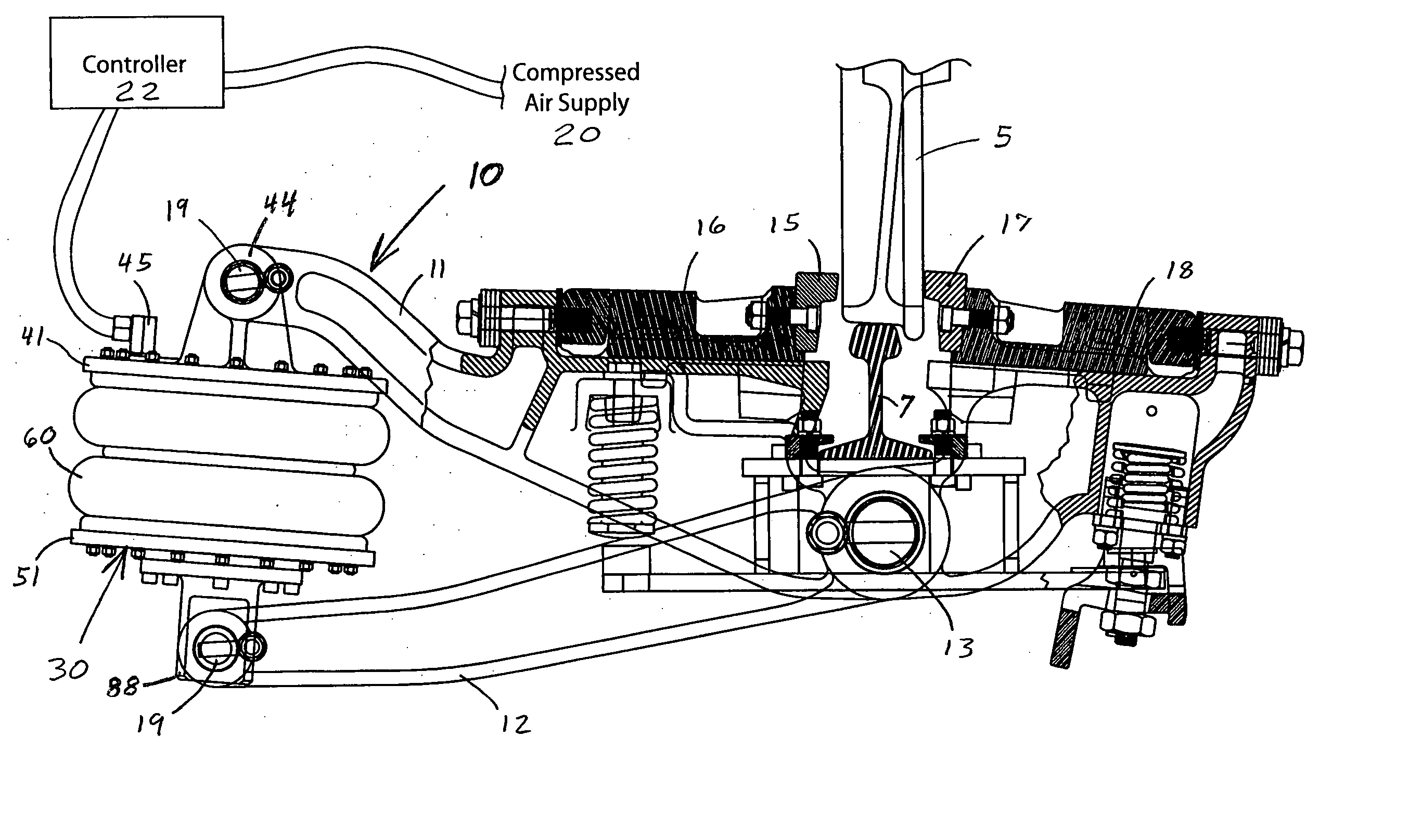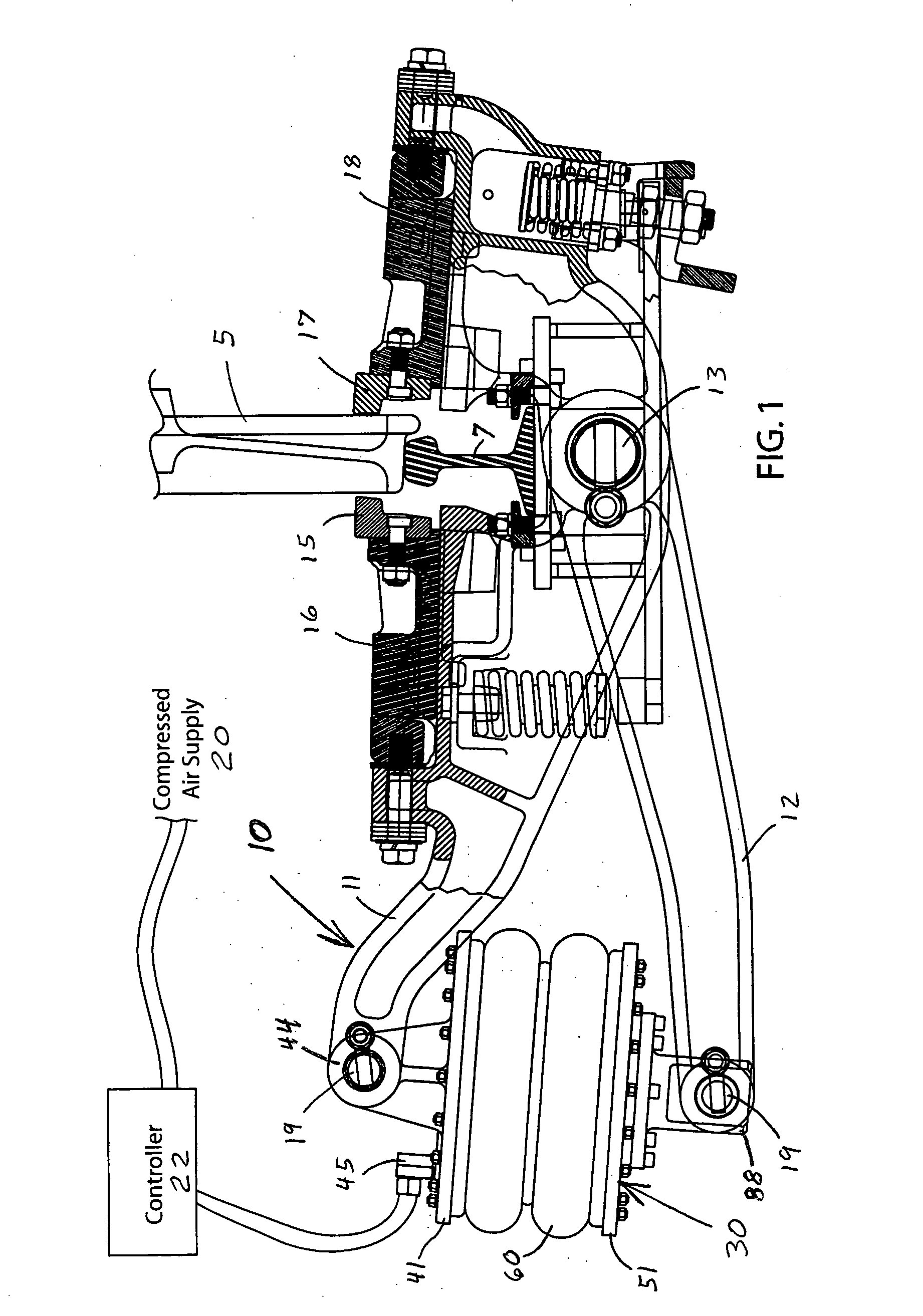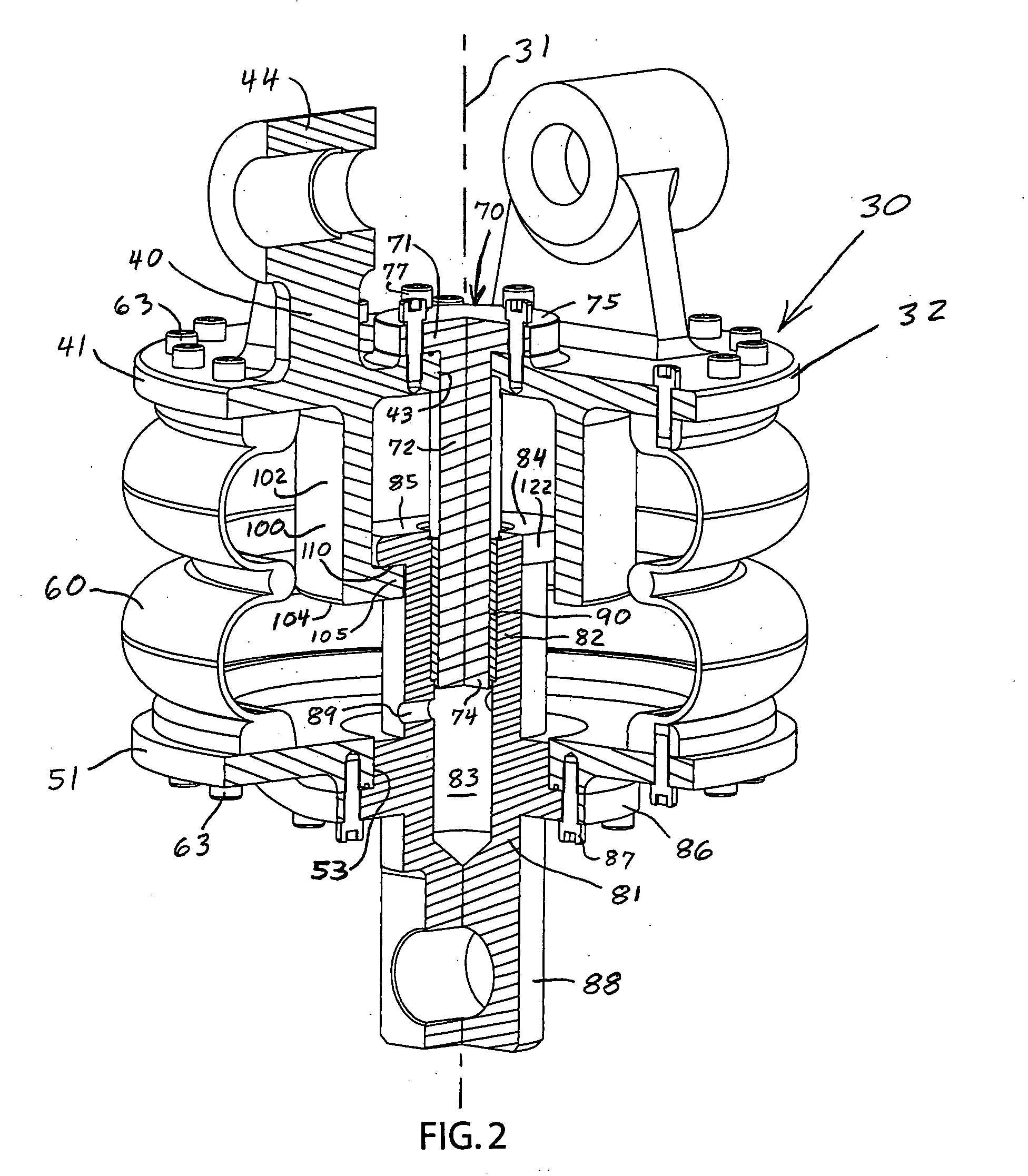Bladder actuator for a railroad retarder
a technology of bladder actuator and retarder, which is applied in the direction of mechanical equipment, track-braking member co-operation, transportation and packaging, etc., can solve the problems of accelerated bushing wear, dirty environment of rail marshalling yard, and rapid wear of internal friction bearings
- Summary
- Abstract
- Description
- Claims
- Application Information
AI Technical Summary
Benefits of technology
Problems solved by technology
Method used
Image
Examples
Embodiment Construction
[0024] While this invention is susceptible of embodiment in many different forms, the drawings show and the specification describes in detail a preferred embodiment of the invention. It should be understood that the drawings and specification are to be considered an exemplification of the principles of the invention. They are not intended to limit the broad aspects of the invention to the embodiment illustrated.
[0025]FIG. 1 shows a wheel 5 of a railroad car riding on one rail 7 of a track. The wheel 5 is passing by a low profile retarder 10 having upper and lower levers 11 and 12 pivotally joined by a pin 13 that acts as a fulcrum. The upper lever 11 has a brake pad 15 and lateral positioning mechanism 16 on the field side of the rail 7. The lower lever 12 has a brake pad 17 and lateral positioning mechanism 18 on the gauge side of the rail 7. The fulcrum pin 13 is located directly under the rail 7. The free end of each lever 11 and 12 has a circular opening for receiving a tubular...
PUM
 Login to View More
Login to View More Abstract
Description
Claims
Application Information
 Login to View More
Login to View More - R&D Engineer
- R&D Manager
- IP Professional
- Industry Leading Data Capabilities
- Powerful AI technology
- Patent DNA Extraction
Browse by: Latest US Patents, China's latest patents, Technical Efficacy Thesaurus, Application Domain, Technology Topic, Popular Technical Reports.
© 2024 PatSnap. All rights reserved.Legal|Privacy policy|Modern Slavery Act Transparency Statement|Sitemap|About US| Contact US: help@patsnap.com










